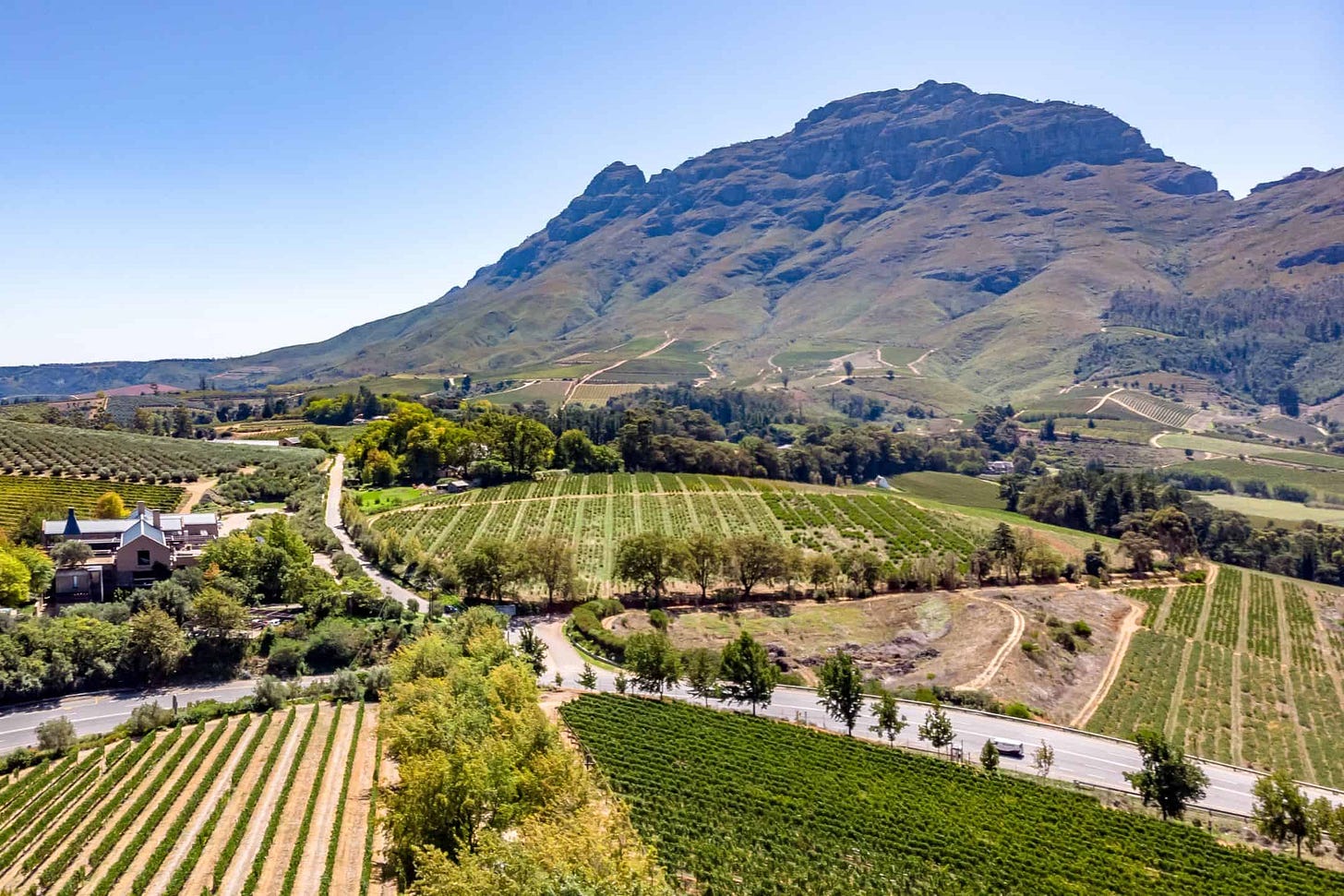Stellenbosch, nestled near the coast just east of Cape Town, stands as South Africa’s most recognized wine district—particularly for Cabernet Sauvignon. Warm, sunlit days meet cooling sea breezes, allowing Cabernet to gain depth without losing structure. The mountainous backdrops shelter many of the best vineyards, creating microclimates that deliver everything from robust, dark-fruited wines to more nuanced, medium-bodied examples. In the global Cabernet conversation, Stellenbosch’s combination of approachability and aging potential has propelled it onto the world stage.
Defining Traits of Stellenbosch
Mediterranean Climate – Strong sunshine and moderate summers encourage steady ripening, while breezes from False Bay maintain freshness in the grapes.
Mountainous Terrain – Vineyards cling to hillsides and valleys, each slope offering a unique exposure that can shift Cabernet’s balance of fruit, acidity, and tannic grip.
Modern Heritage – Though South African wine history dates back centuries, the country’s relatively recent revival means producers blend tradition with forward-thinking innovation.
Premium Subscriber Content
Terroir and Winemaking Deep Dive
In Stellenbosch, geological diversity abounds. Some vineyards boast well-drained granite or sandstone soils, intensifying Cabernet’s concentration. Others feature clay layers that add roundness and plush fruit. Diurnal shifts, especially in wards closer to the coast, bring bright aromatics and bracing acidity.
Keep reading with a 7-day free trial
Subscribe to Daily Terroir: Exploring Wine Regions One Day at a Time to keep reading this post and get 7 days of free access to the full post archives.





